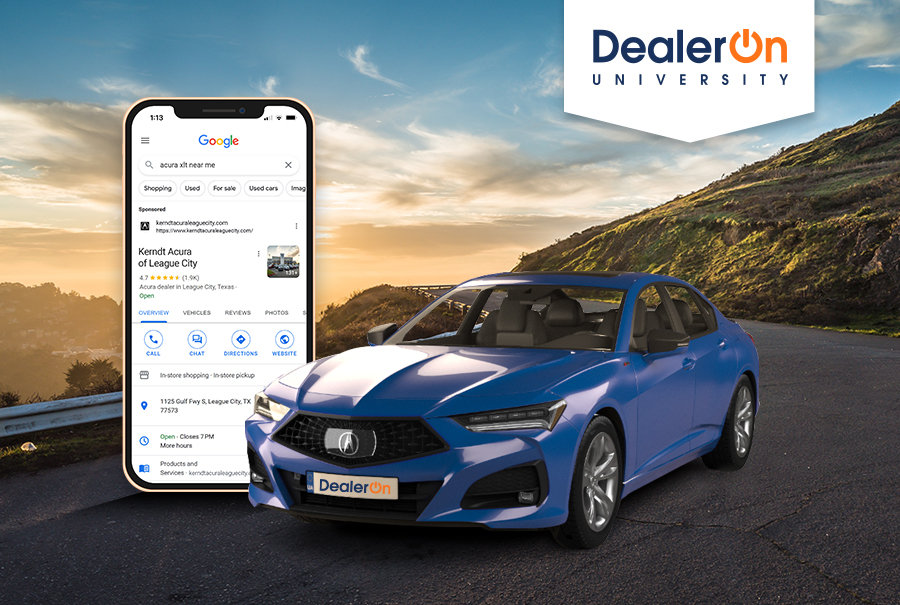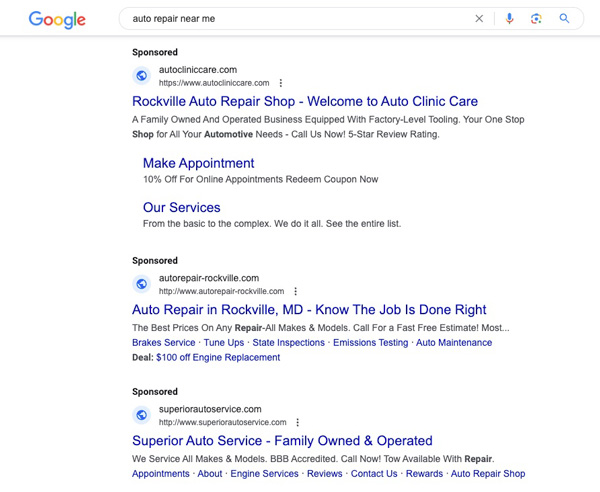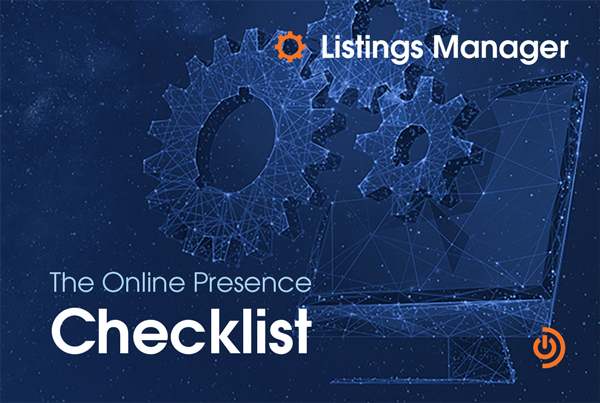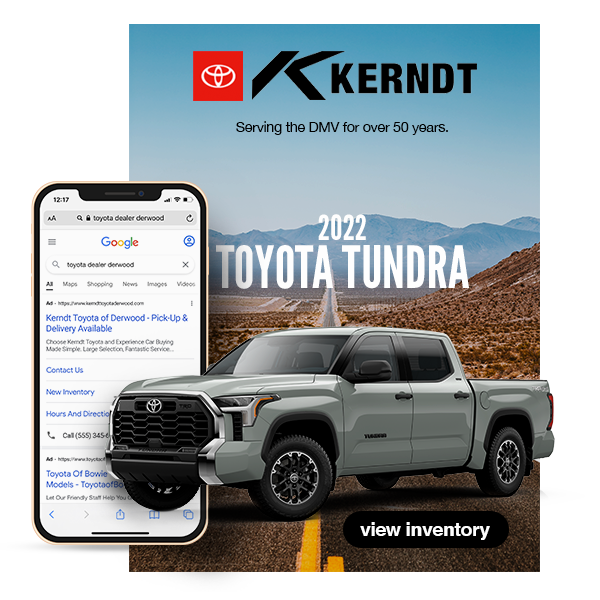

If you need a quick way to generate website traffic, look no further than PPC advertising. When utilized correctly, PPC advertising is one of the most effective marketing methods for getting your messaging out to potential customers. Learn how your dealership can take advantage of PPC Advertising in this edition of DealerOn University.

PPC advertising is an effective way to reach a targeted audience with your brand’s messaging.
The struggle to craft an effective marketing strategy from a limited budget is a real one. Oftentimes, this leads dealerships to forgo Pay-Per-Click (PPC) advertising, citing its cost as the primary reason. Unfortunately, this results in leaving money on the table, as, utilized correctly, PPC advertising is a powerful tool in your overall digital marketing plan.
PPC ads immediately address one of the largest concerns for dealerships: brand visibility. A PPC ad will put your store high in the SERPs, not organically, but it will increase your exposure where you can reach a bigger client base. Additionally, these aren’t merely extra eyes. Advanced targeting allows you to place your ads in front of people who are likely to become customers.
Despite their cost, PPC ads provide immediate results, which is often all you need when limited by budget. You have control over your spending too, meaning you can scale back when you must and go all in when the market is to your benefit. Add to this advanced tracking metrics and you’ll know when your ad spend is effective. No need for guessing. In short, you can’t afford to ignore PPC advertising.
What is PPC Advertising?
The two pillars of digital marketing that focus on search engines are SEO and PPC. SEO is all about ranking highly in organic results, and it is a gradual process that never ends and takes time to bear fruit. PPC advertising means paying for your ads to show up in search results when a query hits certain keywords. To be clear: a good marketing strategy employs both, as SEO and PPC work best in tandem.
PPC advertising is deceptively simple, but utilized correctly, it can accomplish a variety of objectives for your store. Use it to advertise your inventory or even build ads from your inventory to target customers actively searching for a specific vehicle you have in stock. Advertising your VDPs can match customers ready to buy with the vehicle they want.
SEO is all about ranking highly in organic results, and it is a gradual process that never ends and takes time to bear fruit. PPC advertising means paying for your ads to show up in search results when a query hits certain keywords.
Keywords are where PPC finds its often-intimidating cost. While it might be tempting to go after those expensive simple keywords, such as a popular make and model you sell, you’re never going to win those searches. The top results will be eaten up by OEMs, reference articles, and if there’s anything left, big box retailers. You’re better off targeting long-tail keywords that are both less expensive and tend to be used by motivated buyers with something specific in mind.
PPC Ad Channels
PPC has four main channels that you’ll be using in your campaigns. The first is the undisputed king of search engines: Google. As Google accounts for over half of all searches in the USA, Google Ads should be your primary focus when bidding on keywords for your PPC ads.
YouTube has come on strong as a great place for PPC advertising. With more users every day, YouTube boasts an expanding audience with an ad presence that can provide tangible benefits.
Banner ads, activated by specific keywords, are another great channel. These provide the unobtrusive ad experience of the banner targeted by specific keywords.
Lastly, social media is a wonderful channel. Your audience spends time there, so you’re targeting locations where your customers frequent. You can also freely interact with those who interact with you, forming a trusting relationship that can easily create a loyal customer base.
Types of PPC Ads
It’s a mistake to think that PPC campaigns only come in a single variety. Search ads are the most common, but far from the only option. Search ads appear at the top or bottom of SERPs (Search Engine Results Pages) when a user enters the relevant keywords. They are an effective step in driving traffic, especially to those vehicles you want to move.

Google search advertisements can help you quickly get your pages to the top of search results.
Display Ads appear on sites within advertising networks such as the Google Display Network. They are a versatile addition to PPC advertising, as they can include text, images, and rich media formats, and can reach customers on blogs, relevant sites, or news portals.
Social Ads are ads on social media platforms. An effective mode of advertising, social ads reach customers where they spend their free time and enable dealerships to engage socially with customers. Engagement like this can provide real time answers to questions and foster a trusting relationship.
Remarketing Ads are the re-runs of PPC advertising. They target customized ads to users browsing other sites. Reminding users of your dealership, and specific vehicles they have browsed, remarketing ads are specifically for those likely to buy. The numbers don’t lie; there’s a 70% chance of converting retargeted users with display ads than others.
Ready to kick your Digital Advertising into high gear?
Schedule your free demo and we’ll show you how to take your website traffic to the next level.
Target Your Customers
Keywords are the first step in targeting your PPC ads. The idea is to reverse-engineer what sort of queries your customers would be making to find you or a vehicle in your inventory. Avoid the simplest keywords, as they are the most expensive and the hardest to rank highly with. You’re getting the least for your money.
Google Ads Keyword Planner is an excellent place to start. Giving you a good idea of what sorts of keywords you can target as well as their cost, you can plan a robust strategy that gives you the best coverage.
Customers generally have a maximum range that they are willing to travel for a car. Geo-Targeting works with this limitation by letting you target specific locations. You can go as general as a city, narrowing it down to neighborhoods and even blocks. Most searches for new cars contain the phrase “near me” and geo-targeting works with this limitation to build your business.
Create Compelling Ad Copy
An effective ad begins with effective ad copy. You need to craft engaging headlines and descriptions. Much of effective copywriting lies in simple descriptions. Set your vehicle’s best foot forward and speak directly with those most interested in purchasing it. Your headlines should be short, punchy, and sum up the behavior you’re trying to elicit. Calls to Action are the name of the game and should be clear and concise.
Your headlines should be short, punchy, and sum up the behavior you’re trying to elicit. Calls to Action are the name of the game and should be clear and concise.
Digital marketing adds an exciting wrinkle to the skill of ad copy. Along with attracting customers, you need to be attractive to computers, which means inserting keywords into your ad copy. Conduct thorough research to choose the right keywords, and then seed them throughout the copy. Don’t oversaturate and keep your original meaning intact. The keywords should be present, though never overpowering.
Budgeting and Bidding
While a precise number to spend on a PPC campaign is going to vary from market to market, the rule of thumb is to use 10% of your total marketing budget on PPC. Less than that and you will not be getting the most from your work.
Your bidding strategies should strongly favor the kind of long-tail keywords motivated buyers are more likely to use. The shorter ones, while initially attractive, are also overpriced and highly competitive. Basic make and model queries are eaten up by OEMs and informational sites, with the scraps given to big box retailers.
When you’re setting out your bidding strategy, a few terms will come in handy. CPC means Cost Per Click and is the amount you pay whenever someone clicks on your ad. The higher the bid, the better the ad placement. You should set your CPC at the maximum you are willing to pay, but the actual cost is determined by this formula: (Competitor’s Ad Rank / Your Quality Score) + 0.01 = Real CPC.
Ad rank is what determines the position of an ad on SERPs and is equal to Maximum Bid + Quality Score. Quality Score is based on your Click-Through Rate (CTR) measured against the average of other CTRs for similarly placed ads. Maximum Bid is the maximum you’re willing to pay per click on your ad.

Want to verify the strength of your business listings across the web? Download our free guide to auditing your online business listings to see if your current listings are accurate.
Tracking and Analytics
Your site exists to convert visitors to leads, and you need to be tracking conversion rates if you want to know how well your site is doing its job. Implement conversion tracking and you will be able to track your PPC ad campaign’s performance.
Every decision you make in your digital marketing needs to be supported by data. This is the difference between an actual strategy and mere guessing. Leveraging the power of analytics tools means you’ll never be at a loss for what move to make.
Every decision you make in your digital marketing needs to be supported by data. This is the difference between an actual strategy and mere guessing.
Analytics are only the first step toward increasing performance. The next is a robust round of A/B testing. Create two versions of your page with a single difference and have them randomly load whenever a visitor arrives. Collect the resultant conversion data and you’ll know which variant works better. A/B test every change, no matter how small to optimize your website experience.
Retargeting and Remarketing
The most efficient marketing often lies not in attracting new visitors, but in reattracting ones who came and went without a conversion. This is known as remarketing and it is a powerful tool in your kit.
There are a thousand reasons why a visitor failed to convert on a first visit. Many of these can come down to simple distractions, and failing to contact such a user is leaving money on the table. Retargeting and remarketing efforts will put you in contact with users, giving them a second chance at conversion. With these visitors, you’re already over the initial hurdle: they are familiar with you and have some interest in your vehicles. Take the next step and target this fertile market.

DealerOn’s Digital Advertising program can help your dealership generate more website traffic and more leads. Learn More
DealerOn: Your Partner for PPC and Beyond
PPC campaigns are an integral part of a solid digital marketing strategy. PPC ad campaigns build brand awareness and greatly increase the lead generation potential of your website. You will be able to generate interest in specific vehicles with targeted campaigns while selling to motivated customers.
DealerOn is your ideal digital advertising partner with unique strategies that go far beyond traditional automotive PPC. We can boost your leads by at least 25% while covering every PPC outlet, from social media to remarketing to display ads.
- Market-Driven Strategy: We maximize return on your spend by using market intelligence and meticulously hand-crafting campaigns.
- Track Down to the Sale: Our track-to-sale feature allows you to view every lead and track what you sold, letting you accurately gauge the ROI of your paid search efforts.
- Lead Guarantee: We’re so confident in our ability to deliver extraordinary results that we guarantee that your digital advertising lead volume will increase by 25%.
Schedule your free digital advertising demo today. We can’t wait to show you all the ways our digital advertising services can generate more website traffic and leads for your dealership.


